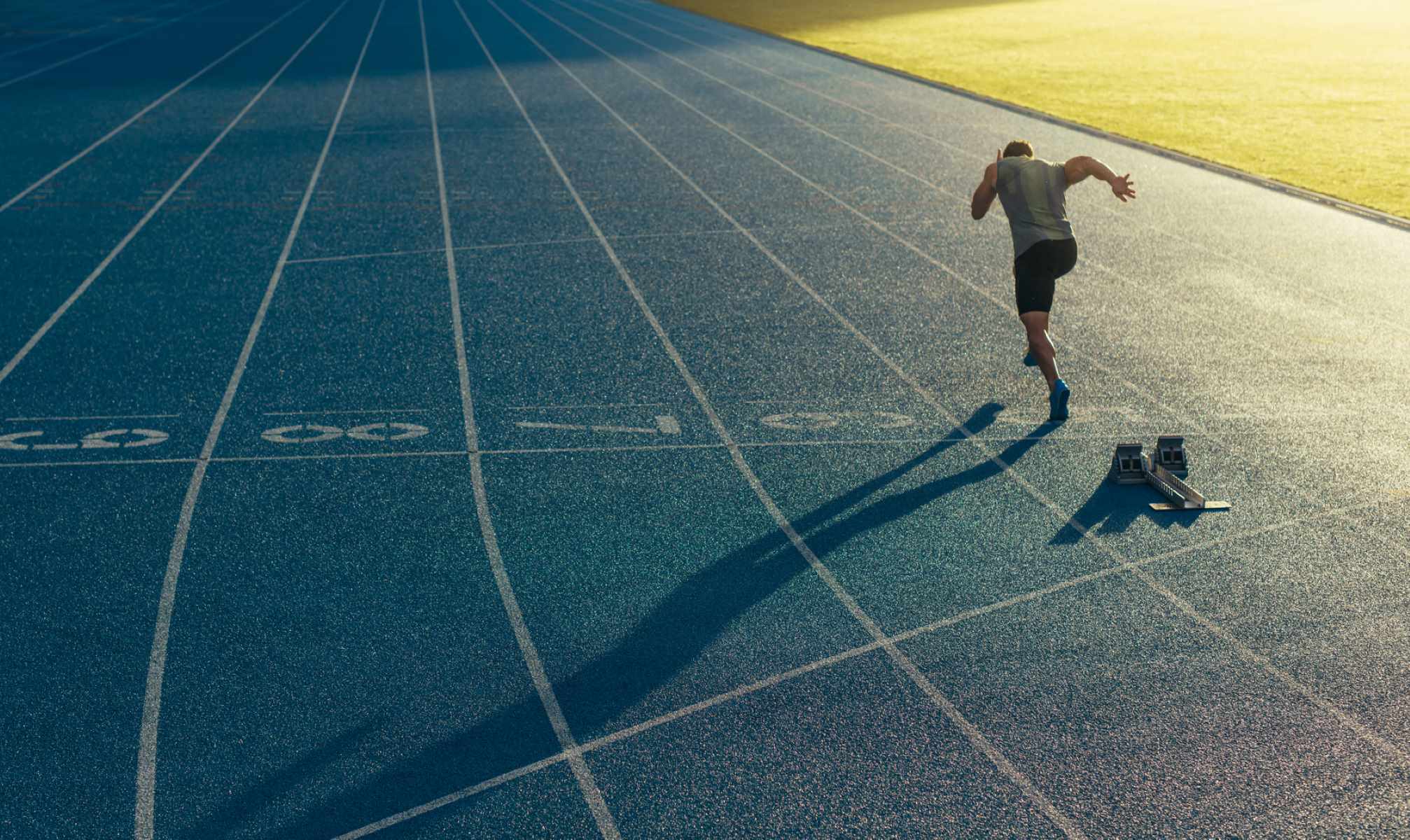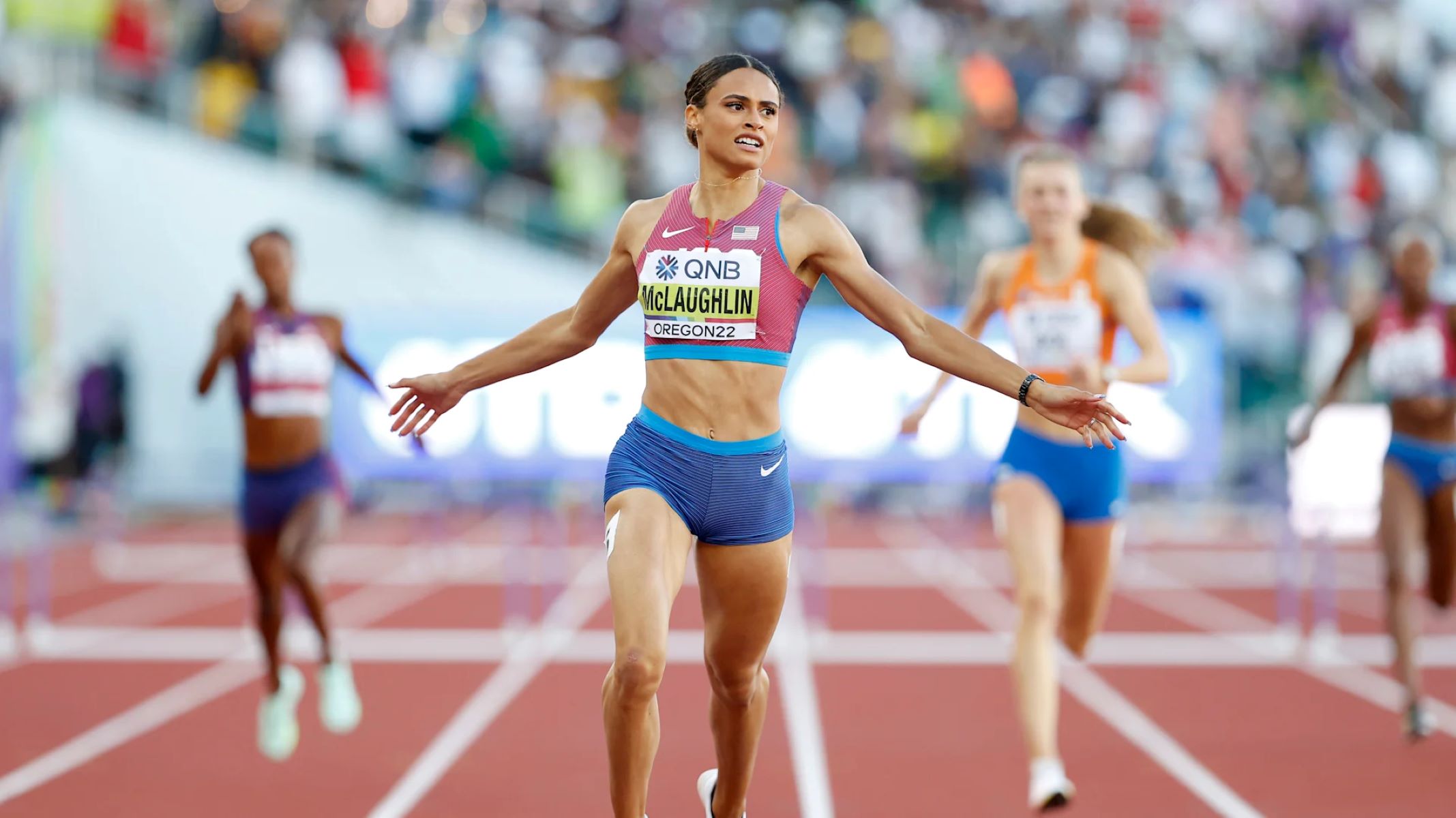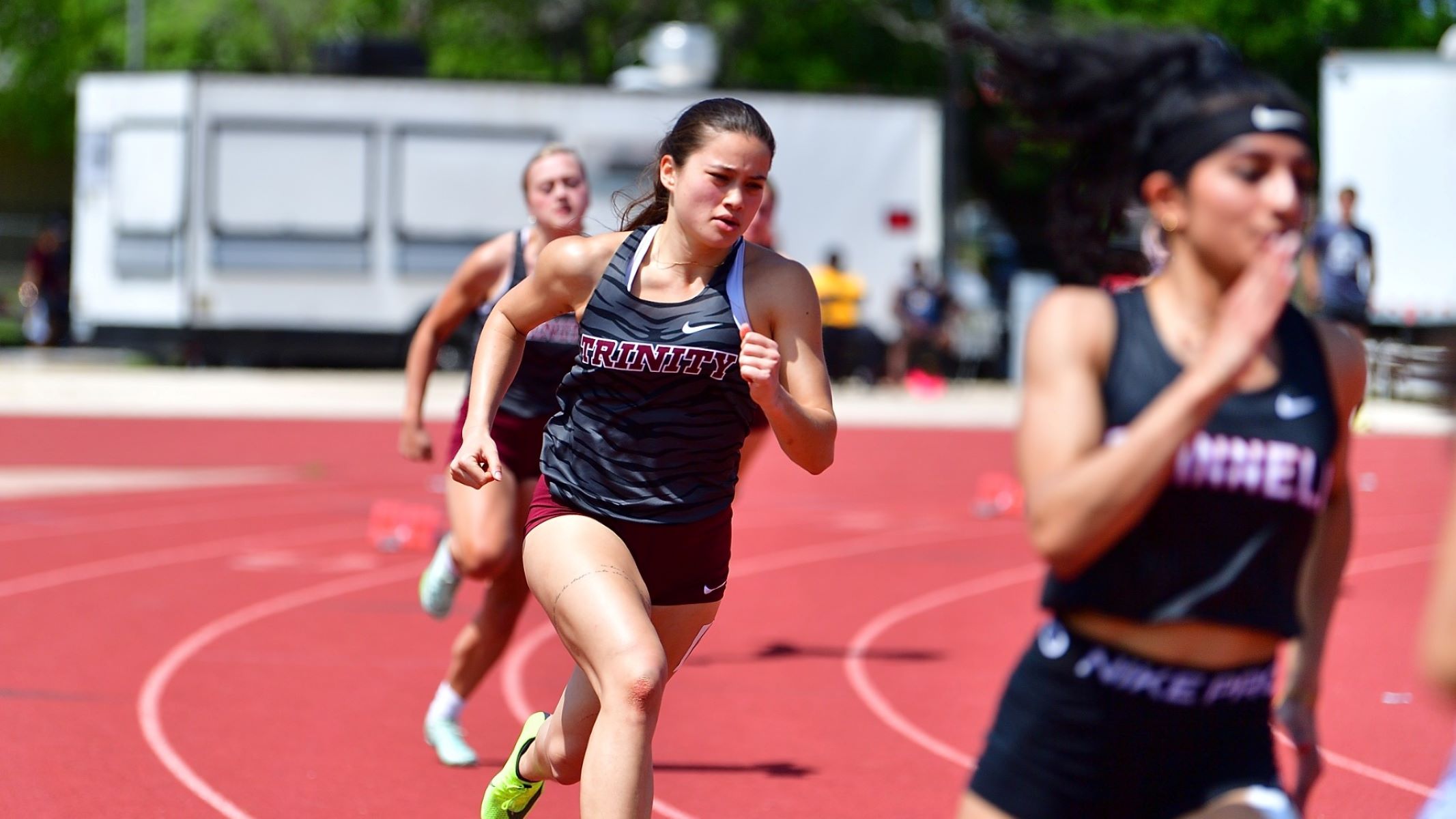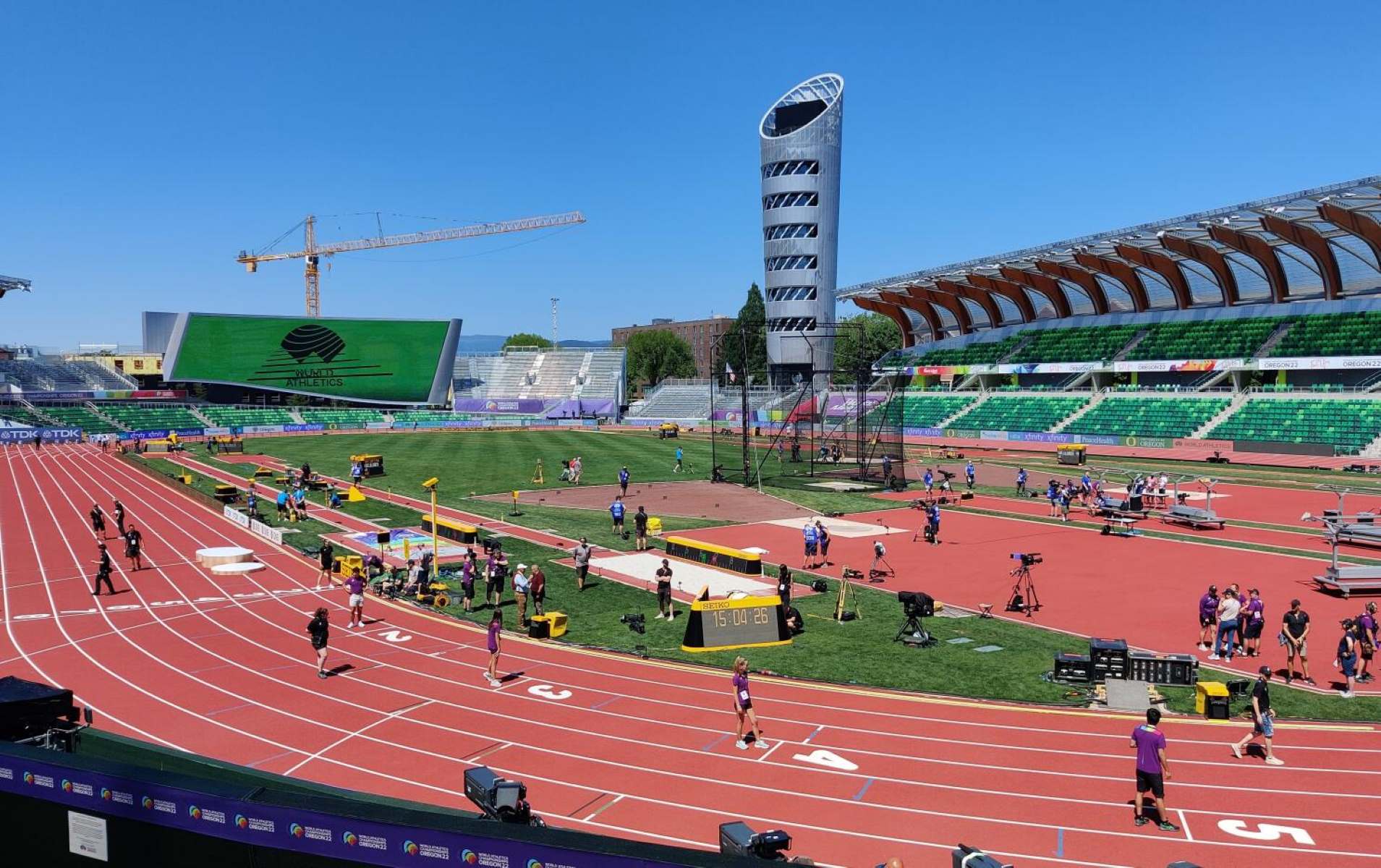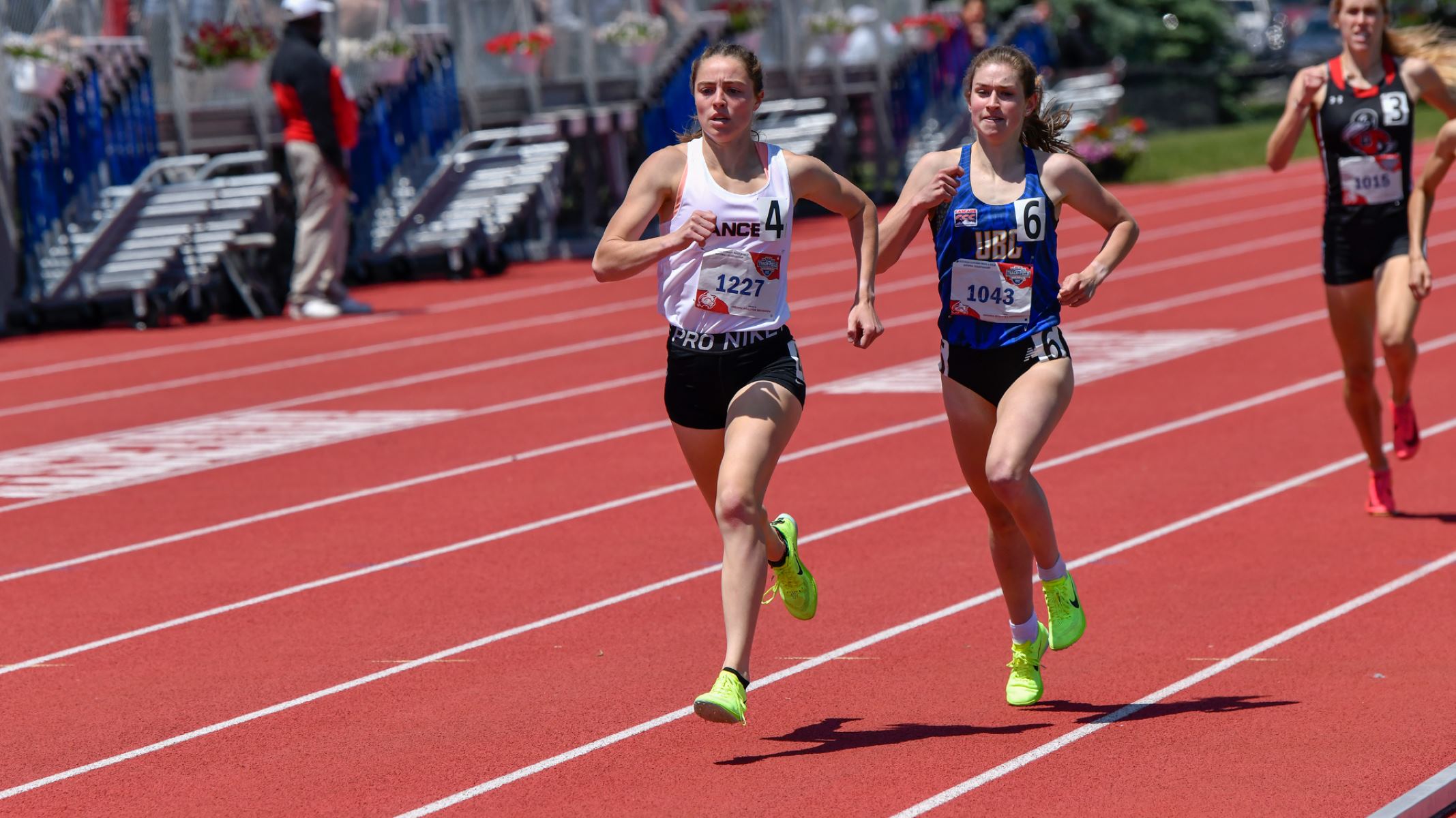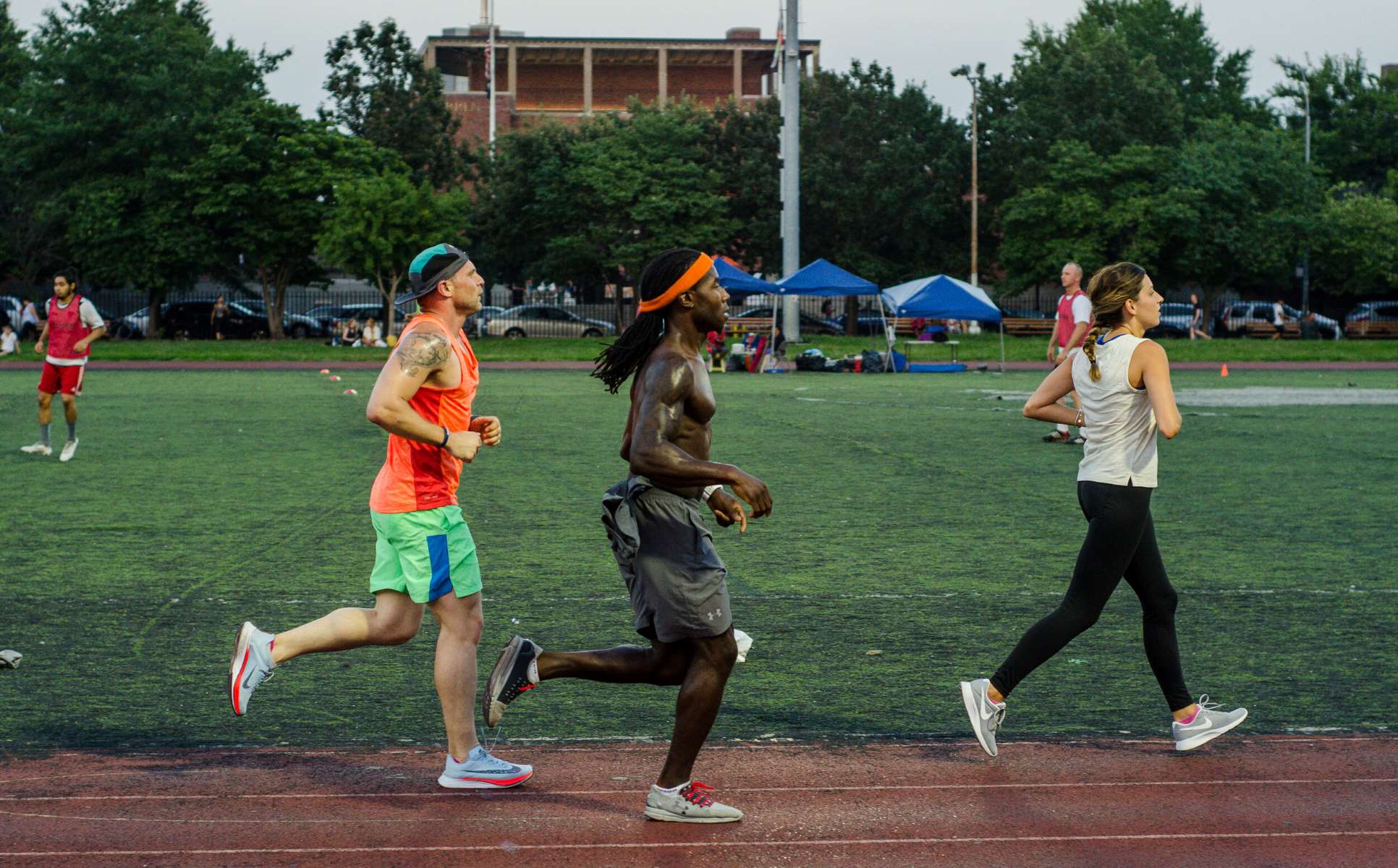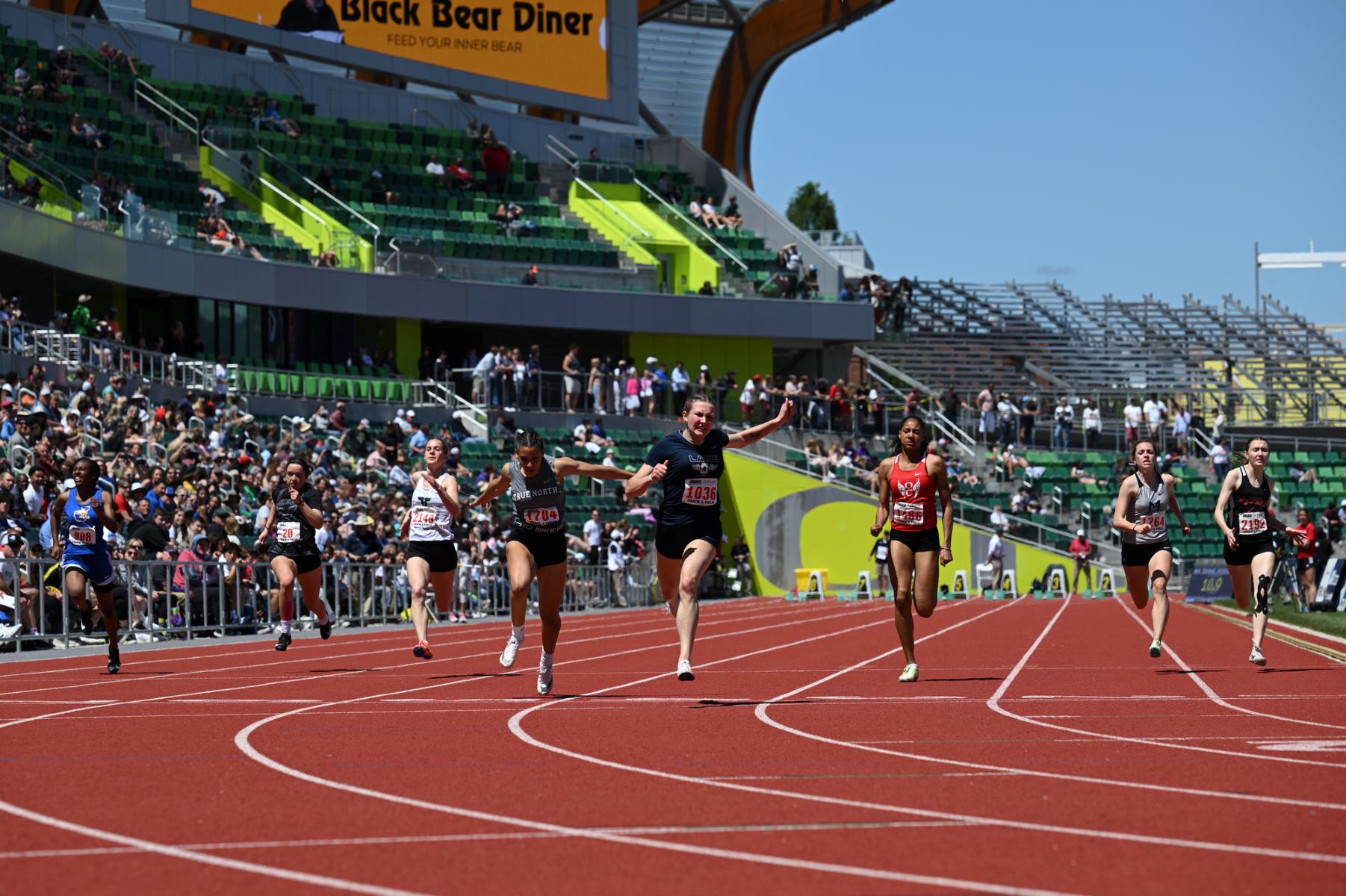

Featured
How To Qualify For U20 Track And Field
Published: August 31, 2023
Learn how to qualify for U20 track and field championships with this featured guide, packed with tips and strategies to help you reach your athletic goals.
Introduction
Welcome to the exciting world of U20 track and field! Competing at the U20 level is a remarkable opportunity for young athletes to showcase their skills, test their limits, and potentially catapult their athletic careers to greater heights. Aspiring athletes from around the world aspire to qualify for U20 track and field events, which represent a stepping stone towards participation in elite international competitions such as the Olympic Games or World Championships.
In this article, we will delve into the key information you need to know about qualifying for U20 track and field events. From eligibility requirements to training and preparation, we will explore all aspects of the journey towards becoming a U20 track and field competitor. So, whether you are a budding athlete or a parent supporting your child’s athletic ambitions, let’s embark on this informative adventure together!
Qualifying for U20 track and field events requires meeting certain eligibility criteria, achieving specific performance standards, and going through a rigorous selection process. It demands dedication, hard work, and a burning desire to excel in the sporting arena.
So, without further ado, let’s dive into the first aspect of the qualification process – the eligibility requirements.
Eligibility Requirements
To qualify for U20 track and field events, athletes must meet certain eligibility criteria. These criteria ensure fair competition and a level playing field for all participants. Let’s explore the key eligibility requirements:
- Age Limit: As the name suggests, U20 track and field events are open to athletes who are under the age of 20. The age is determined based on the athlete’s age on a specific date, usually January 1st of the competition year. Therefore, if an athlete turns 20 before that date, they are no longer eligible to compete in U20 events.
- Nationality Requirements: Athletes must also meet nationality requirements to compete in U20 track and field events. Generally, athletes must hold citizenship or residency in the country they intend to represent. Some competitions may also require athletes to have been a resident of that country for a certain period of time.
It’s important for athletes to familiarize themselves with the specific eligibility requirements of the competition they wish to participate in. These requirements may vary slightly from event to event, so conducting thorough research and consulting with the respective event organizers is crucial.
Meeting the eligibility requirements is the first step towards qualifying for U20 track and field events. Once an athlete meets these criteria, they can focus on the next phase of the qualification process – achieving the required performance standards.
Age Limit
The age limit in U20 track and field events is a crucial factor to determine the eligibility of athletes. The age limit ensures that participants compete against others in a similar age group, providing a fair and level playing field.
Typically, the age is calculated based on the athlete’s age on a specific date, commonly January 1st of the competition year. For example, if an athlete is 19 years old on January 1st, they are eligible to compete in U20 events throughout that year. However, once an athlete turns 20 before January 1st, they are no longer eligible to participate in U20 events for that year.
The age limit not only ensures fairness in competition but also serves as a way to identify and develop talent in young athletes. U20 events provide a platform for athletes to showcase their skills and potential at an age when their physical abilities are typically at their peak.
It is important for athletes to be aware of and carefully track their age as they progress in their athletic journey. This will help them plan their participation in U20 events strategically and maximize their chances of success.
Athletes who are nearing the age limit should also explore other age-specific categories, such as U23 or senior events, to continue their competitive journey and pursue their athletic goals beyond the U20 level.
Overall, the age limit in U20 track and field events plays a crucial role in ensuring fair competition and providing young athletes with an opportunity to showcase their abilities at a crucial stage of their athletic development.
Nationality Requirements
In addition to the age limit, U20 track and field events also have specific nationality requirements that athletes must meet to be eligible to compete. These requirements are put in place to ensure that athletes represent the country they have a strong connection to, either through citizenship or residency.
Most competitions require athletes to hold citizenship or residency in the country they wish to represent. This means that athletes must have a legal and recognized association with the country they are competing for. Citizenship can be established through birthright, lineage, or through the naturalization process. Residency requirements may vary, with some events requiring athletes to have been residents of the respective country for a certain period of time.
The nationality requirements aim to maintain the integrity and national representation in U20 track and field events. They ensure that athletes compete for the country they are closely associated with, rather than exploiting eligibility loopholes for personal gain or advantage.
It’s essential for athletes to carefully review the nationality requirements for the specific competition they are aiming to qualify for. They should ensure that they meet the necessary criteria and have the appropriate documentation to prove their eligibility. Consulting with the event organizers or national athletic federation can provide valuable guidance and clarification.
For athletes with dual nationality, there may be the opportunity to choose which country to represent. It’s important for athletes to consider various factors such as support systems, training facilities, competition opportunities, and long-term athletic goals when making this decision.
Representing one’s country in U20 track and field events is not only a matter of pride but also an opportunity to compete against the best athletes from around the world. Meeting the nationality requirements is an essential step in the qualification process to ensure that athletes participate in a fair and competitive environment.
Qualifying Standards
Qualifying standards play a crucial role in determining an athlete’s eligibility for U20 track and field events. These standards are set by the event organizers or governing bodies and serve as benchmarks for athletes to meet in order to participate.
The qualifying standards vary for each event and discipline, taking into consideration factors such as performance levels, competitiveness, and the number of available spots. These standards are usually expressed in terms of specific time measurements, distances, or heights that athletes need to achieve in their respective events.
Athletes are required to demonstrate their abilities and meet or surpass the specified qualifying standard during competition or specific qualification events. This ensures that only athletes who have proven themselves capable of competing at a certain level are granted the opportunity to participate in U20 events.
The set qualifying standards serve several purposes. Firstly, they maintain the standard of competition and ensure that athletes who are truly prepared and capable of competing at the U20 level get the chance to showcase their skills.
Secondly, qualifying standards act as motivation and goals for athletes to strive towards. They provide athletes with clear performance targets and benchmarks to work towards during their training and preparation. Achieving these standards often requires athletes to push their limits, refine their techniques, and improve their fitness levels.
It’s important for athletes to carefully review and understand the qualifying standards for the specific event they want to qualify for. Athletes should track their performances and work systematically to improve their abilities to meet or surpass these standards.
Athletes should also keep in mind that qualifying standards may change from one competition cycle to the next. It is crucial to stay updated with any updates or revisions to the qualifying standards and adjust training and preparation accordingly.
Ultimately, meeting the qualifying standards is a significant milestone towards competing in U20 track and field events. It signifies an athlete’s readiness, skill level, and ability to perform at the desired level, earning them the opportunity to compete among the best in their age group.
Selection Process
The selection process for U20 track and field events is a crucial step that determines which athletes will have the opportunity to compete at the highest level. The process varies depending on the specific event or competition, but typically involves a combination of performance-based criteria and selection by the national athletic federation or organizing committee.
Here’s an overview of the general selection process:
- Performance-based Criteria: Athletes are often required to meet certain performance standards in their respective events to be considered for selection. These standards may include achieving specific times, distances, or heights that demonstrate the athlete’s readiness to compete at the U20 level. Athletes who consistently demonstrate exceptional performances and meet or surpass the set criteria increase their chances of being selected.
- National Federation Selection: In many cases, the final decision regarding athlete selection is made by the national athletic federation. The federation takes into account the athletes’ performances, potential, consistency, and overall contribution to the sport. They may also consider factors such as previous competition results, rankings, and talent identification programs. The federation’s selection committee carefully evaluates and assesses each athlete’s potential to represent the country at the U20 level.
- Competition Trials: Some competitions may incorporate selection trials, where athletes have the opportunity to compete against others vying for a spot in the U20 team. These trials often consist of head-to-head competition or a series of qualifying rounds, with the top performers earning their place on the team. These trials provide a fair and competitive environment for athletes to showcase their abilities and prove their worth.
It’s important for athletes to thoroughly research and understand the specific selection process for the U20 event they are aiming to qualify for. This includes knowing the criteria, deadlines, and any additional requirements set by the national federation or event organizers.
Athletes should focus on consistently improving their performances, maintaining a high level of dedication and determination, and being proactive in seeking opportunities to showcase their skills. This includes participating in relevant competitions, training camps, and talent development programs recognized by the national federation.
Participating in regional or national-level championships, as well as securing top rankings in age-group categories, can greatly enhance an athlete’s chances of being selected for U20 track and field events.
Ultimately, the selection process serves as a means of identifying the most talented and deserving athletes to compete at the U20 level, representing their country on the world stage of track and field.
Training and Preparation
Training and preparation are key factors in ensuring athletes are ready to compete at the U20 track and field level. A comprehensive and well-structured training plan, along with physical and mental preparation, can significantly contribute to an athlete’s success in qualifying for and performing well in U20 events.
Here are some key aspects to consider when it comes to training and preparation:
- Individualized Training Plan: Each athlete has unique strengths, weaknesses, and goals. It’s vital to develop an individualized training plan that takes into account an athlete’s specific needs and targets. The training plan should incorporate a balance of technical skill development, strength training, endurance workouts, speed training, and recovery periods. The plan should progressively challenge the athlete, aiming for continuous improvement.
- Quality Coaching: Having access to experienced and knowledgeable coaches is essential. Coaches can provide guidance, expertise, and personalized training programs that align with an athlete’s goals and abilities. They can identify areas for improvement, correct technique, and help athletes optimize their performance through structured training sessions.
- Physical Conditioning: U20 track and field events require athletes to be in peak physical condition. Regular strength training, flexibility exercises, and cardiovascular workouts are essential to improve overall fitness levels. Athletes should also focus on enhancing specific physical attributes related to their events, such as explosive power, agility, and endurance.
- Mental Preparation: The mental aspect of competition is just as important as physical preparation. Athletes should develop mental resilience, focus, and confidence through techniques such as visualization, goal-setting, and mindfulness. Mental preparation also involves managing pre-competition nerves, building a positive mindset, and developing effective strategies for dealing with pressure.
- Competition Experience: Gaining experience through regular competition is crucial for athletes looking to qualify for U20 track and field events. Competing against strong opponents and navigating various competition formats can help athletes assess their performance, identify areas for improvement, and adjust their training accordingly. It is recommended to participate in local, regional, and national-level competitions to gain exposure and build a strong competitive record.
A holistic approach to training and preparation is essential to maximize an athlete’s potential. Athletes should prioritize their physical and mental well-being, ensure adequate rest and recovery, and maintain a healthy lifestyle with proper nutrition and hydration.
Additionally, regular evaluation of training progress, seeking feedback from coaches and mentors, and making necessary adjustments along the way are key elements of effective training and preparation for U20 track and field events.
Competitions and Rankings
Competing in various competitions and monitoring rankings are essential for athletes aiming to qualify for U20 track and field events. Participating in competitions provides valuable opportunities to showcase skills, gain experience, and improve performance, while rankings serve as a benchmark to assess an athlete’s standing within their age group.
Here are some key points to consider regarding competitions and rankings:
- Competition Selection: Athletes should strategically select competitions that align with their goals and provide opportunities to achieve qualifying standards. These may include local, regional, or national-level meets, as well as specific qualification events organized by the national athletic federation. It’s important to seek out competitive events that attract strong athletes, as facing tougher competition can help elevate an athlete’s performance.
- Consistency in Performance: Competing regularly allows athletes to refine their skills, gain confidence, and track their progress over time. Consistent performances, achieving or surpassing the required standards, can help athletes solidify their eligibility for U20 track and field events. It’s crucial to maintain focus, discipline, and determination during competitions, aiming for consistent improvement and striving to deliver peak performances when it matters most.
- Rankings and Standings: Monitoring rankings is an important aspect of understanding an athlete’s position within their age group. National and international rankings provide a snapshot of an athlete’s performances compared to their peers and can help athletes set benchmarks and goals for improvement. Athletes should familiarize themselves with the ranking systems used by national and international athletic federations to track their progress and identify areas for development.
- Utilizing Results for Selection: Competition results, especially those achieved in recognized and sanctioned events, hold weight in the selection process for U20 track and field events. Strong performances, consistent improvement, and achieving qualifying standards can enhance an athlete’s chances of being selected for the U20 team. Athletes should communicate their achievements and results to their national athletic federation, ensuring their performances are duly recognized.
It’s important for athletes to maintain a comprehensive competition schedule while being mindful of proper recovery to avoid overexertion and reduce the risk of injuries. Balancing training, competition, and rest is crucial for sustained success.
Participating in competitions not only provides valuable performance data but also offers an opportunity for athletes to network, build connections, learn from other athletes, and gain exposure to coaches, recruiters, and talent scouts.
Ultimately, a mix of consistent participation in competitive events, achieving strong results, and monitoring rankings can significantly contribute to an athlete’s journey towards qualifying for U20 track and field events.
Tips for Success
Achieving success in qualifying for U20 track and field events requires a combination of talent, hard work, and strategic planning. Here are some valuable tips to help athletes increase their chances of success in their journey:
- Set Specific Goals: Clearly define your goals and targets for U20 track and field qualification. Whether it’s achieving a specific time, distance, or height, having clear goals provides focus and direction in your training and competition preparations.
- Develop a Well-Structured Training Plan: Work with experienced coaches to create a tailored training plan that combines technical skill development, strength training, conditioning, and rest. A well-structured training plan ensures progressive improvement and reduces the risk of injury.
- Prioritize Consistency: Consistency in training and competition is key. Regularly participate in competitions and maintain a consistent training routine to refine your skills and build your competitive experience. Consistent effort and dedication will yield results over time.
- Adopt a Growth Mindset: Embrace a growth mindset that sees challenges as opportunities for growth. Learn from both successes and setbacks, and constantly seek areas for improvement. Stay open to feedback and be willing to adapt your training and approach based on what you discover.
- Nurture Mental Resilience: Developing mental resilience is crucial for success in competitive sports. Practice mental techniques such as visualization, positive self-talk, and mindfulness to enhance focus, confidence, and stress management.
- Take Care of Your Body: Recovery and self-care are just as important as training. Prioritize proper nutrition, hydration, and sufficient rest to allow your body to recover and adapt. Listen to your body and address any injuries or niggles promptly to avoid long-term setbacks.
- Seek Guidance and Mentorship: Surround yourself with knowledgeable coaches, mentors, and a supportive team. Their expertise, guidance, and encouragement will play a crucial role in your development and success. Learn from those who have gone before you, seek advice, and embrace the lessons shared by experienced athletes.
- Stay Informed and Be Prepared: Regularly check competition requirements, changes in qualifying standards, and any updates from the national athletic federation. Being proactive and well-informed will ensure you are prepared for any upcoming qualification events.
- Maintain a Positive Attitude: Approach your journey with a positive attitude and enjoy the process. Embrace the challenges, celebrate your progress, and find joy in the pursuit of your goals. A positive mindset will help you stay motivated and resilient.
Remember, the journey towards qualifying for U20 track and field events goes beyond just the physical aspect. It requires mental fortitude, dedication, and a passion for the sport. Embrace the process, learn from each experience, and continue to push yourself to reach new heights.
Conclusion
Qualifying for U20 track and field events is an exciting and challenging endeavor for aspiring young athletes. The journey towards competing at the U20 level requires meeting eligibility requirements, achieving qualifying standards, navigating the selection process, and dedicating oneself to training and preparation.
By understanding the age limit and nationality requirements, athletes can ensure they meet the necessary criteria to compete in U20 events. Meeting the qualifying standards through consistent training, improvement, and perfomances is crucial to earn eligibility for selection. The selection process, often involving performance-based criteria and national federation decisions, determines the final roster of athletes representing their country. A structured training plan, physical conditioning, mental preparation, and competition experience are essential for athletes aiming to excel in their journey towards qualifying for U20 events. Regularly participating in competitive events and monitoring rankings provide valuable feedback and insights into an athlete’s progress.
Success in qualifying for U20 track and field events requires setting specific goals, maintaining consistency, adopting a growth mindset, seeking guidance, and embracing a positive attitude. By nurturing both the physical and mental aspects of their development, athletes can maximize their potential, overcome challenges, and seize opportunities for growth.
Remember, qualifying for U20 track and field events is not just about competition, but also about personal growth, discovering one’s capabilities, enjoying the journey, and building lifelong skills and memories. So, as you embark on this exciting path, stay focused, work hard, and never lose sight of your passion for the sport. Good luck!

